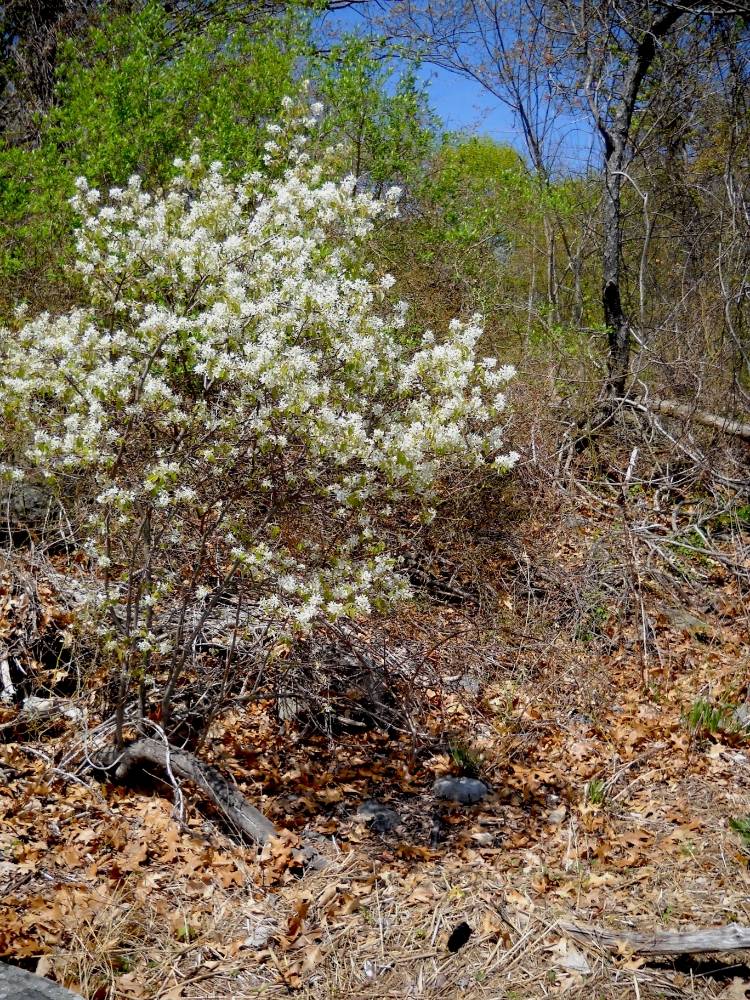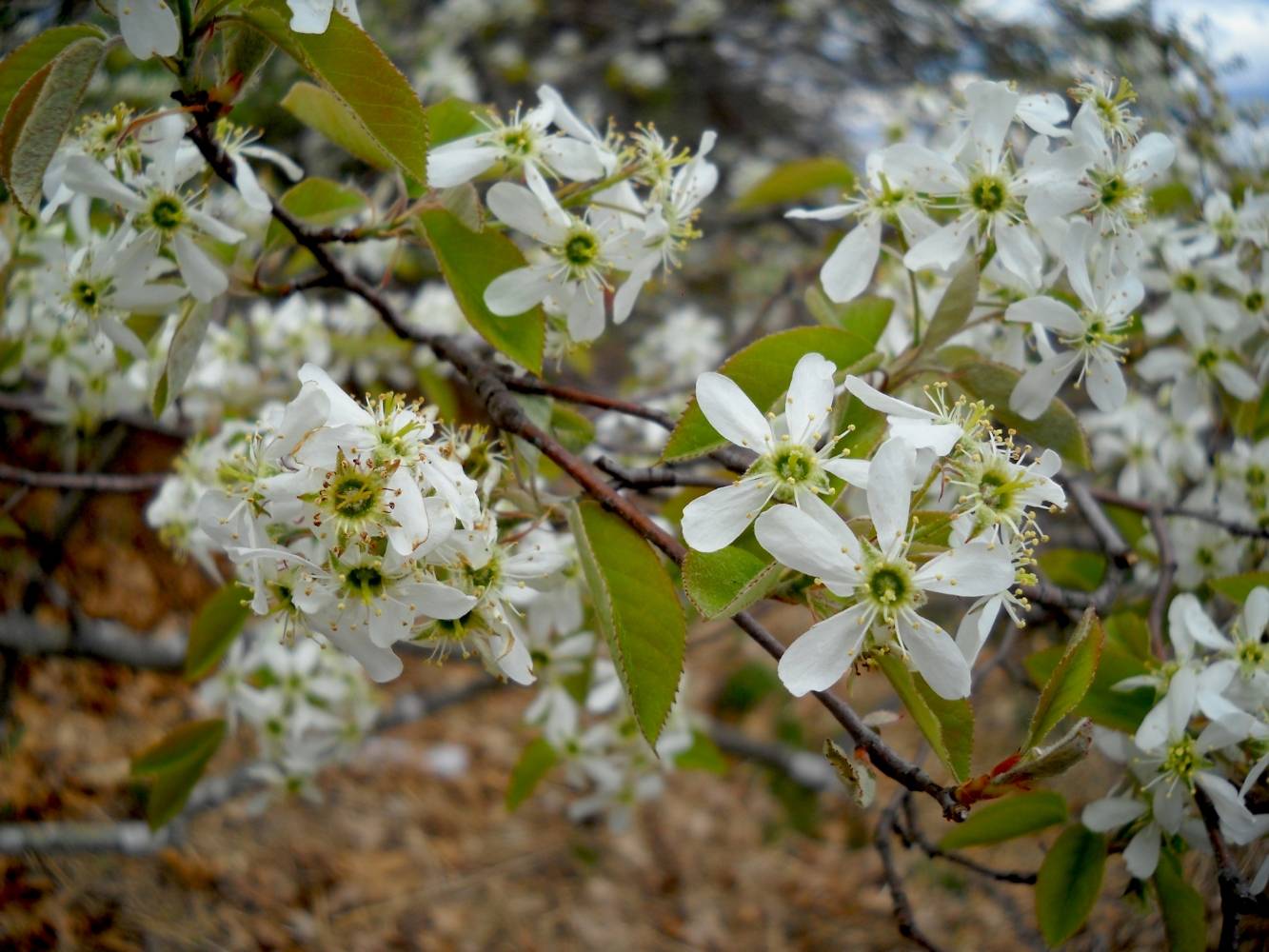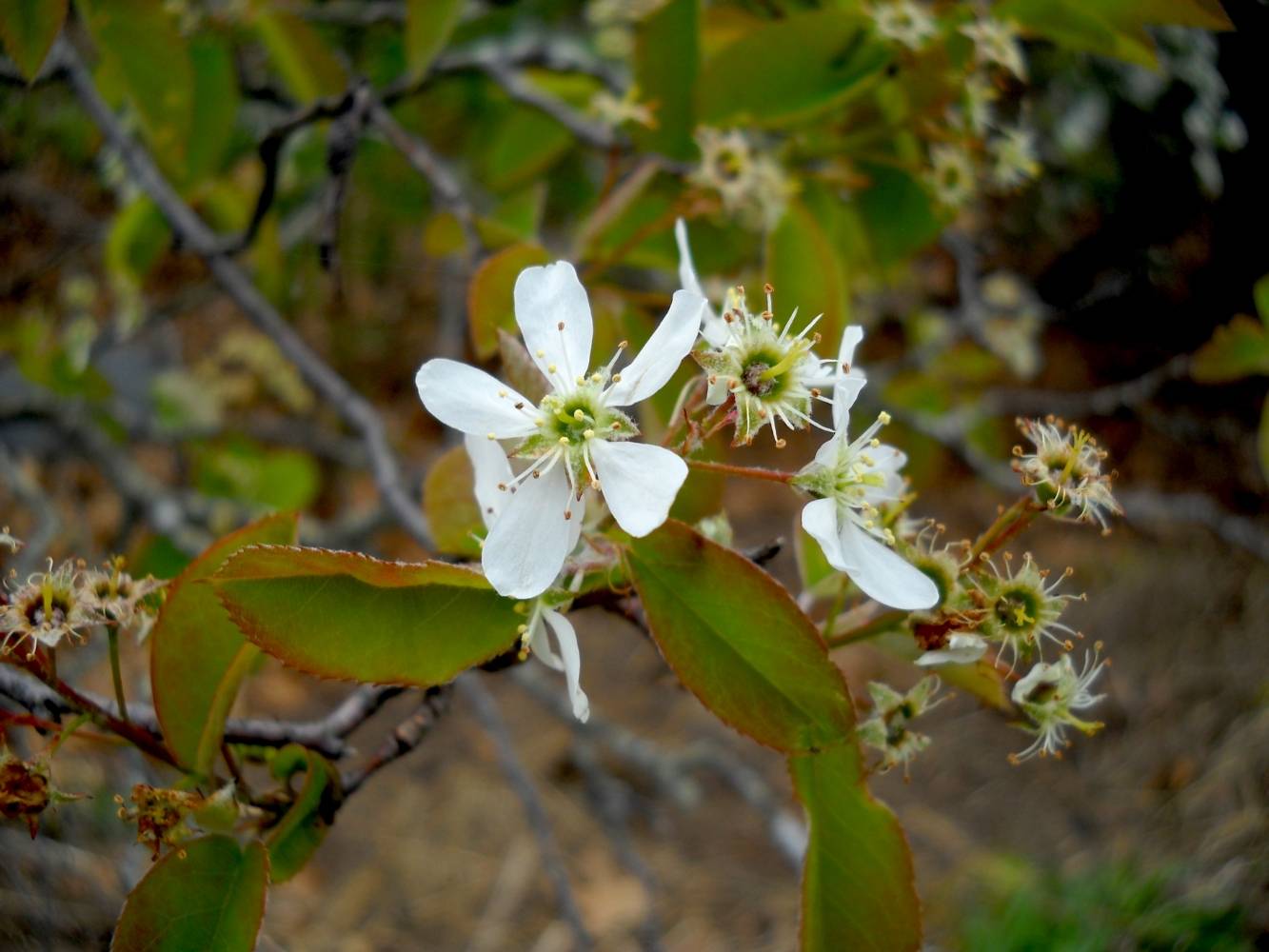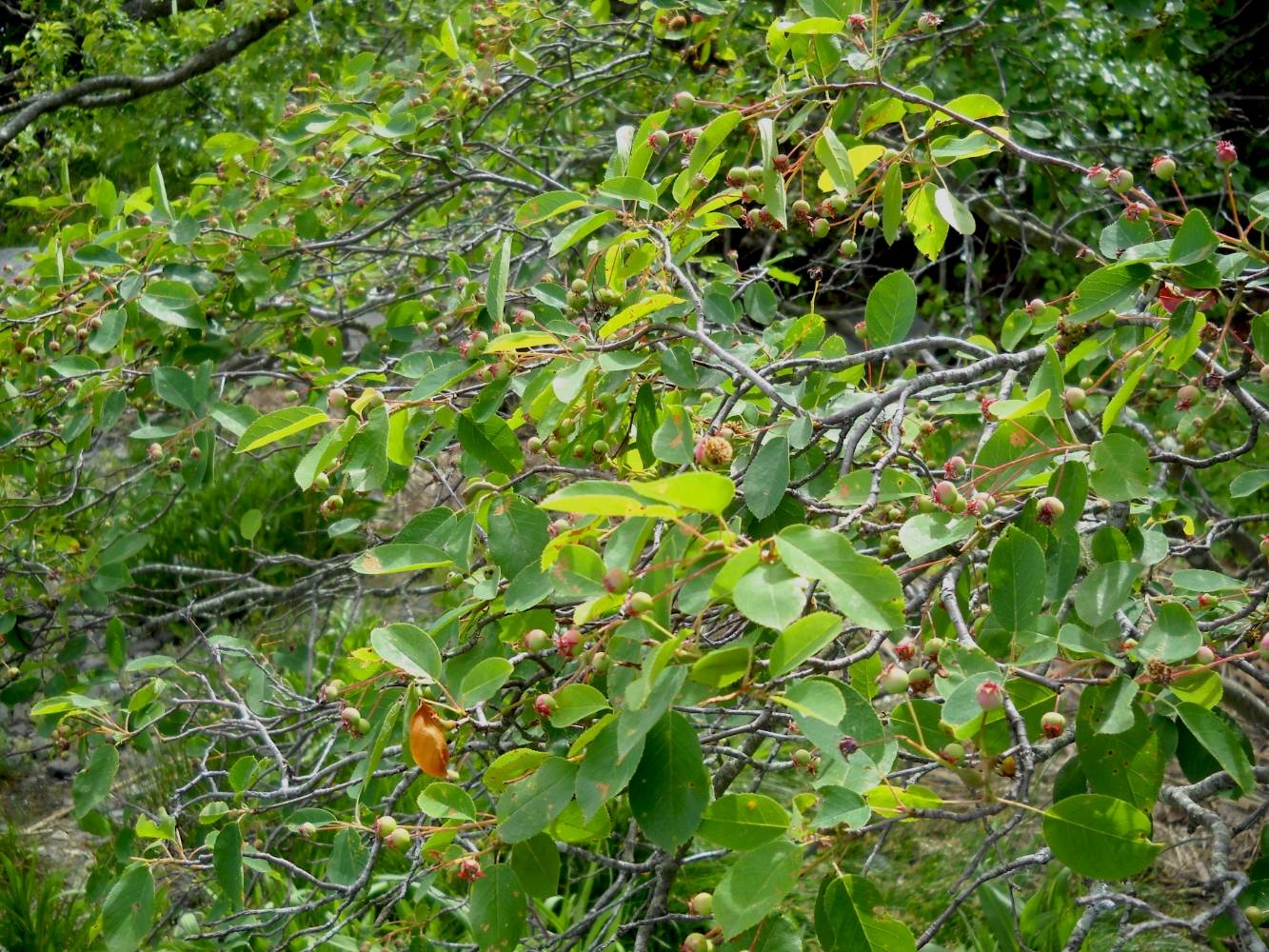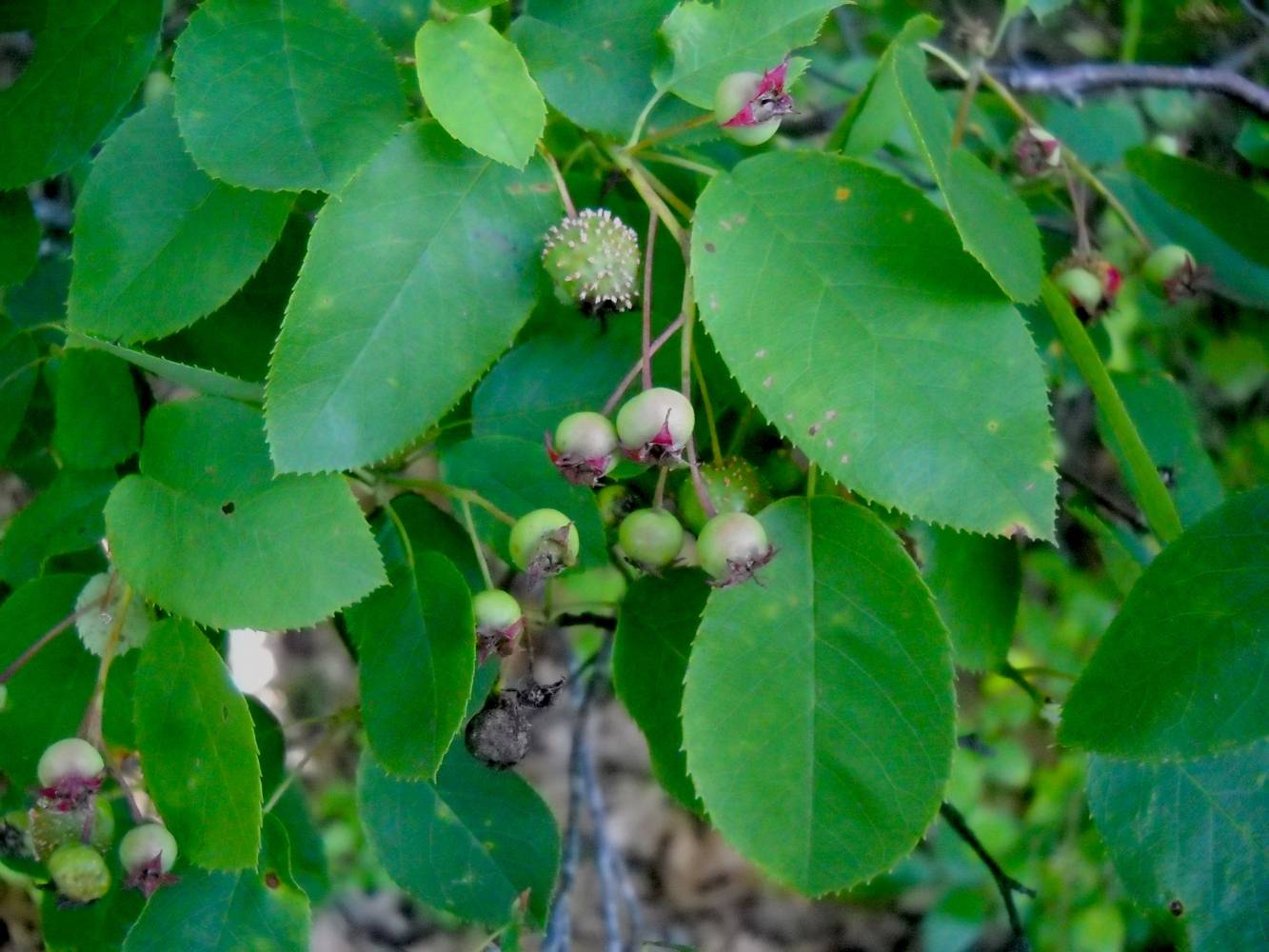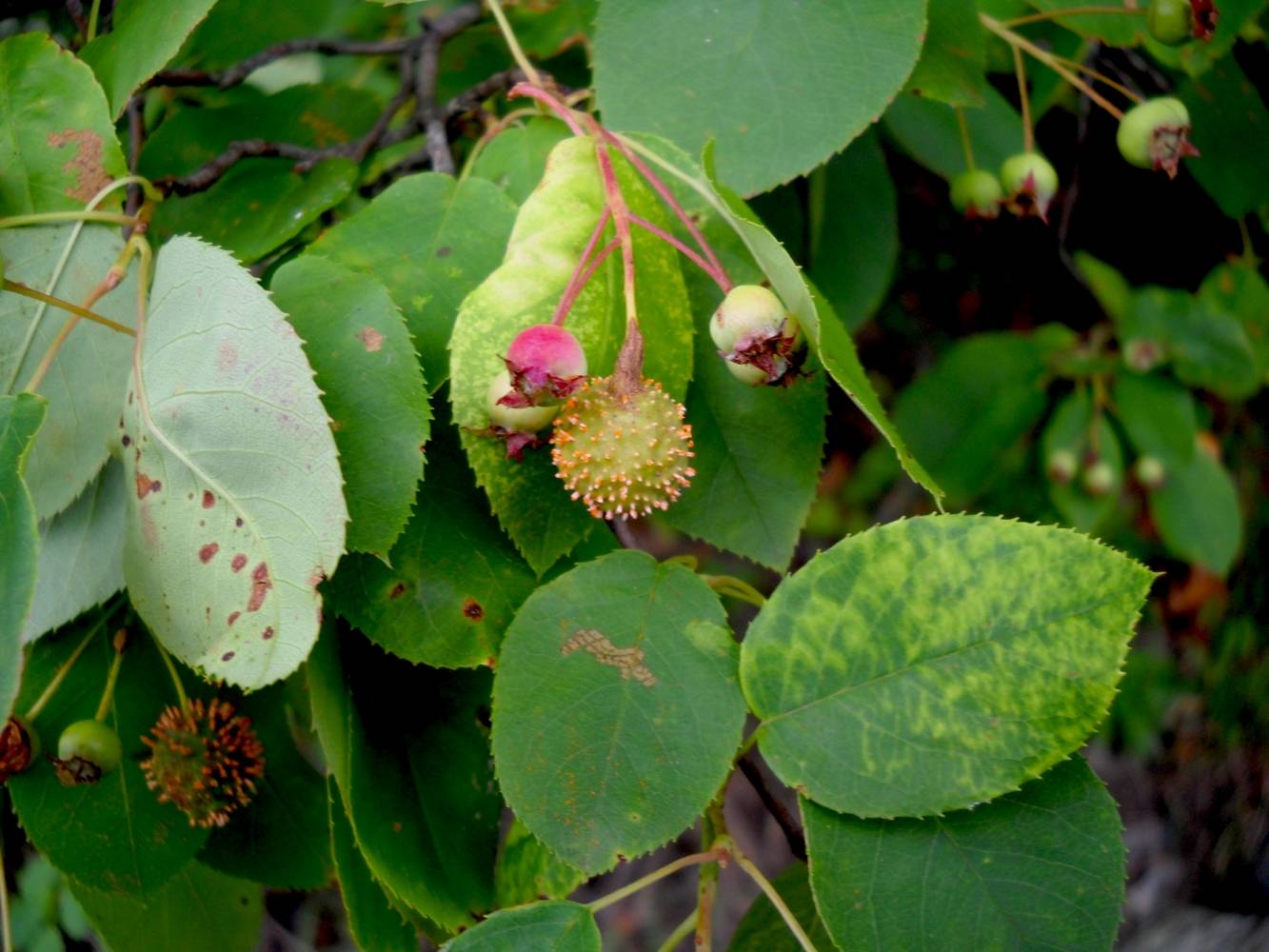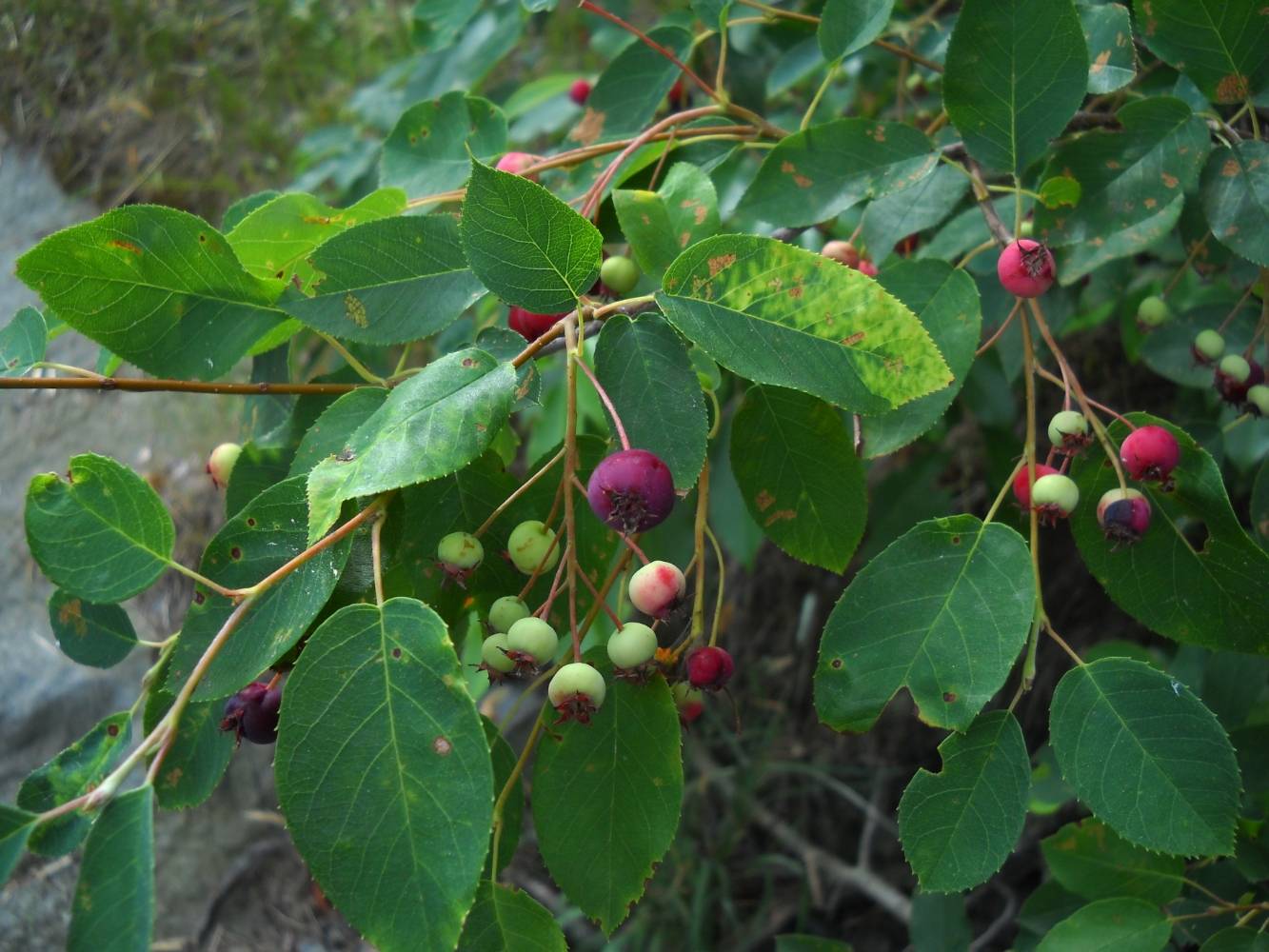Canadian serviceberry
The Canadian serviceberry has the form of a tall shrub or small tree. It is native to eastern North America and has been associated with various folktales and stories for hundreds of years. In New England, it was thought that by the time it bloomed the ground would have thawed enough for digging and funeral services were planned for those who died in the winter and hence its name 'serviceberry'. In the Hudson River Valley, the blooming coincided with the massive spring run of shad upriver to spawn and there, its common name is the 'shadbush'.
At Salter Grove, serviceberry plants are not abundant but can be found along the Upland Trail, the causeway, the Marsh Trail, as well as Rock Island Trail.
Serviceberry plants are particularly conspicuous when their showy white flowers appear in early spring before the leaves. The small fruits ripen by early summer and are considered by some people to be more delicious than high bush blueberries. Serviceberry wood is rock hard and is considered one of the hardest in North America. However, its small diameter prevents it from being use for more than tool handles.
Native Americans use the blooming of flowers as a signal to plant corn. Serviceberry fruits were eaten fresh or dried for winter use. They were also given to mothers after childbirth for afterpains and hemorrhages. Other parts of the plant were used to treat various ailments. An infusion of the bark was given to children with worms. Infusion of the root was given to prevent miscarriage after injury. A decoction of the inner bark were used as a disinfectant wash.
For more information:
https://gobotany.nativeplanttrust.org/species/amelanchier/canadensis/
http://dendro.cnre.vt.edu/dendrology/syllabus/factsheet.cfm?ID=850
http://www.florafinder.com/Species/Amelanchier_canadensis.php
https://www.nybg.org/blogs/plant-talk/2012/04/learning/native-plants-101-the-shadbush-story/
https://botanyphoto.botanicalgarden.ubc.ca/2014/07/amelanchier-canadensis-gymnosporangium/
http://naeb.brit.org/uses/search/?string=amelanchier+canadensis
Richardson, J. (1981). Wild edible plants of New England: A Field Guide: Including Poisonous Plants Often Encountered. DeLorme Pub. Co. p. 142.
Seymour, T. (2020). Foraging New England: Edible Wild Food and Medicinal Plants from Maine to the Adirondacks to Long Island Sound. Falcon Guides. pp. 86-88.


